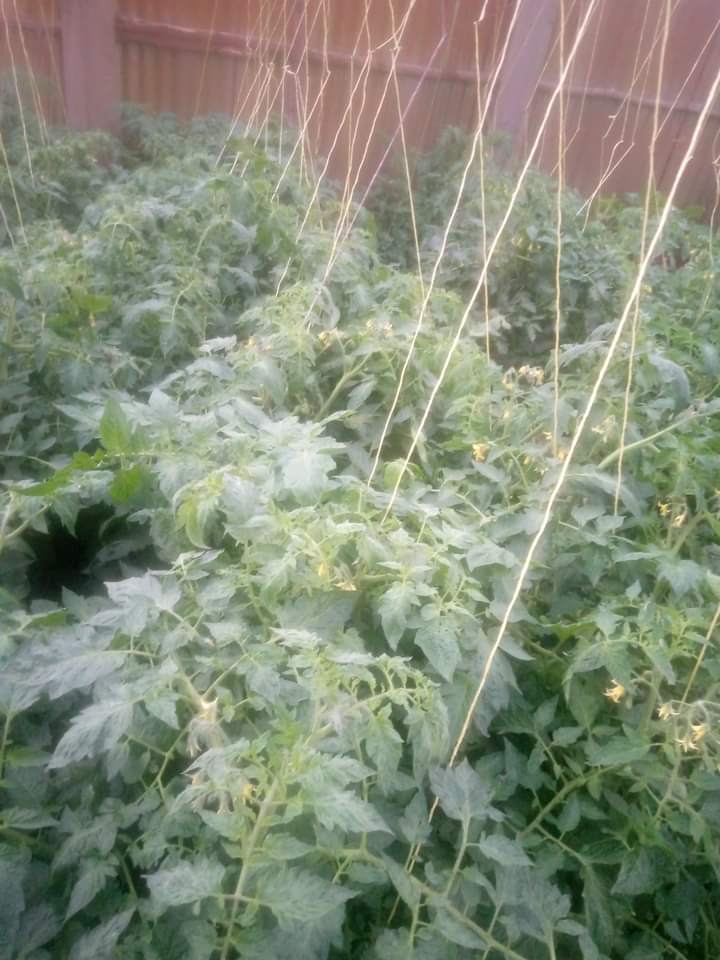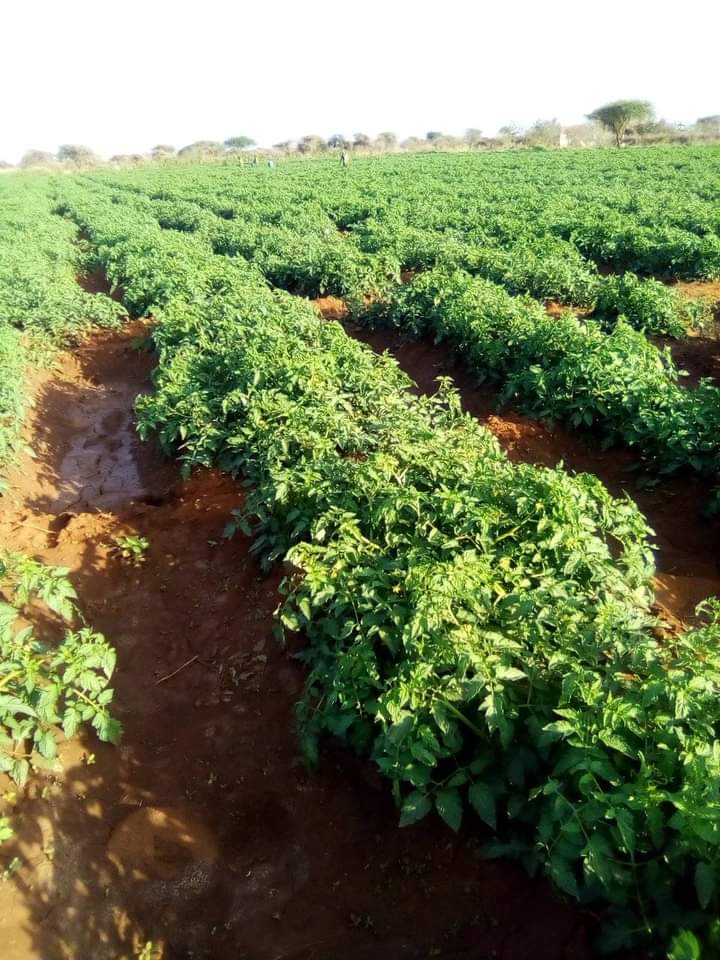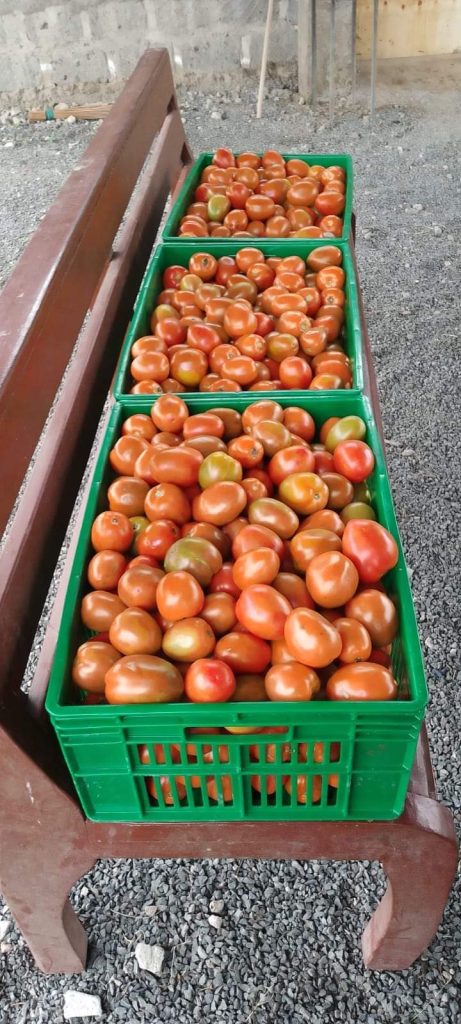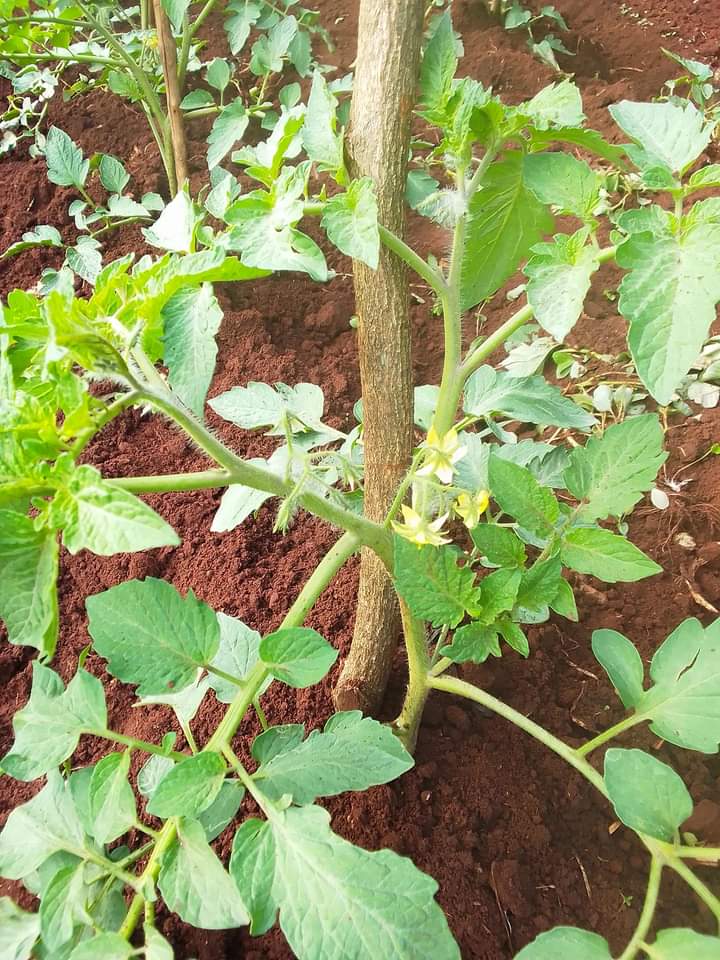Tomato farming in Kenya is not just a livelihood but a promising avenue for agricultural prosperity. With a robust market demand and relatively straightforward cultivation practices, tomatoes hold a special place in the hearts and fields of Kenyan farmers. However, to unlock the full potential of tomato cultivation, a comprehensive understanding of ecological considerations, cultivation techniques, pest and disease management, greenhouse farming, tomato varieties, farming practices, yield optimization, and crop management techniques is crucial.
Ecological Considerations Before Planting:
- Location Selection: Optimal tomato cultivation begins with strategic location selection. Proximity to water sources reduces irrigation costs, making it economically viable. For greenhouse farming, proximity to electricity for climate control is also essential.
- Crop Rotation: Effective crop rotation is pivotal in maintaining soil health and mitigating disease risks. Avoid planting tomatoes after potatoes or peppers, allowing a three-month break to break disease cycles.
- Topography and Soil: Gently sloping land with well-drained loamy soil fosters optimal root development and water drainage. Conducting soil analysis helps in pH adjustment and determining nutrient requirements.
- Nursery Preparation: Create a conducive environment for seed germination by preparing raised beds with fine-textured soil. Mulching aids in moisture retention and weed suppression, promoting healthy seedling growth.
Preparing the Perfect Tomato Nursery Bed

Tomatoes flourish when transplanted from well-established nursery seedbeds, particularly when cultivated in trays for optimal growth. Creating an ideal nursery bed is paramount for fostering strong plant establishment and early vigor.
Begin by forming seedbeds with raised soil, approximately 15cm in height, and leaving ample space of around 30cm or more between beds for convenient access. Thoroughly till the soil to facilitate easy seed penetration and germination. As a preventive measure against nursery damping off and to enhance seed vitality, immerse the seeds in a solution comprising AFRIKELP (2ml per liter of water) and RODAZIM (1ml per liter of water) for four minutes before sowing.
When planting seeds like Cal J tomatoes, ensure they are not buried too deeply but instead lightly covered with a thin layer of soil. Utilize your finger to create planting rows, ensuring optimal spacing of around 15cm between rows. To enhance moisture retention, consider covering the bed with hay or dry grass, which also aids in reducing water splash during irrigation.
Optimal watering practices entail irrigation in the morning, with seeds expected to germinate within 8-10 days. Sustain watering until a week or two prior to transplanting, gradually reducing irrigation to facilitate seedling hardening. Typically, seedlings are primed for transplanting after approximately one month of growth.
Regular scouting for pests and diseases is imperative during the nursery stage, enabling early detection and treatment for enhanced survival rates. By meticulously preparing the nursery bed and implementing diligent care practices, growers can nurture robust tomato seedlings poised for successful transplantation and subsequent cultivation.
Transplanting and Planting
Two days prior to transplanting, administer AFRIKELP (2ml per liter) to the seedlings to facilitate swift recovery from transplant shock. Transplantation should be conducted when seedling stems reach a diameter of 4-6 millimeters or achieve a height of approximately one foot, ensuring the exclusion of weak or diseased plants.
For optimal spacing, plant the seedlings at intervals of 45 centimeters by 60 centimeters. Dig planting holes to a depth of 6 inches, incorporating any manure carefully into the soil before planting. Apply DAP fertilizer at a rate of 80 kilograms per acre to bolster soil fertility.
To address soil-borne insect pests and fusarium wilt, drench the soil with a solution comprising IMAXI (15ml per 20 liters) and RODAZIM (20ml per 20 liters) before planting.
Upon removal from the nursery bed and thorough watering, shelter the seedlings in a shaded area away from direct sunlight. Plant each seedling individually, covering the roots with soil and firmly compacting the soil around them. Water adequately but avoid excessive watering, ensuring optimal conditions for successful transplant establishment.
Fertilization and Watering
After four weeks, perform a top-dressing of either CAN or UREA at a rate of 50 kilograms per acre to nourish the plants. Ensure diligent weed control, particularly within the initial 30 days of growth, avoiding hand weeding to prevent root damage. Apply AMBAR at a dosage of 30 milliliters per 20 liters between rows and plants to suppress weed germination and eliminate broad-leafed weeds, utilizing the appropriate nozzle for optimal efficacy. It’s essential to apply AMBAR when weeds are below 4 inches in height and smaller than the tomato plants for best results.
During the flowering stage, administer another application of Harmony at a rate of 30-40 milliliters per 20 liters, targeting the flower buds. Optionally, mix Harmony with soluble foliar fertilizers high in potassium and calcium to mitigate calcium end rot and other fruit-related diseases while safeguarding against flower and fruit abortion. Following the flower setting phase, refrain from applying nitrogen-rich fertilizers such as CAN, NPK, or Urea.
Maintain adequate soil moisture through irrigation, ensuring the soil remains moist without becoming saturated or muddy. An irrigation schedule of twice a week, utilizing 10,000 to 20,000 liters per acre, is typically sufficient for optimal tomato growth and development.
Disease Control

Vigilantly monitor the crop for signs of blight, mildew, and canker, especially during cool and wet conditions when blight is most prevalent. As a preventive measure against blight, apply an early spray of Stage at a rate of 20 milliliters per 20 liters of water, repeating the application after 7 days if weather conditions remain cold and wet. Continuously scout for disease symptoms thereafter, applying Stage 250 EW in weekly intervals if any signs of disease are detected. Enhance plant vigor and stress recovery by incorporating Harmony at a rate of 30-40 milliliters per 20 liters in each application of Stage.
Conduct daily inspections for signs of insect damage, particularly during warm and dry conditions. Serious pests such as spider mites, leaf miners (tuta absoluta), thrips, whiteflies, caterpillars, and aphids pose significant threats to the crop and should be diligently controlled. Additionally, inspect vegetation surrounding the field perimeter for potential pest infestations.
To effectively manage aphids and worms, especially during fruit set, administer a spray of JACKPOT at a rate of 12.5 milliliters per 20 liters of water. For stubborn leaf miners and red spider mites, employ a mixture of ROMECTIN (20ml/20ltr) and IMAXI (12.5ml/ltr). Control whiteflies by applying BAMAKO at a rate of 5 grams per 20 liters of water, targeting both the crop and field edges, particularly in the evening.
By implementing proactive pest and disease management strategies, growers can safeguard their tomato crops and ensure healthy plant development, ultimately maximizing yield potential and crop quality.
Staking and Pruning Techniques for Tomatoes

Staking and pruning are pivotal techniques in maximizing the productivity of tomato plants, especially when compared to traditional open-air methods. By vertically tying plants using strings and poles, growers create a structured framework that encourages upward growth and increased fruit production. This method allows for multiple fruit clusters to develop along the stem, leading to higher yields.
Supporting tomato plants should commence early after transplanting to prevent stem damage or breakage as the plants mature. By connecting two poles with a wire and suspending plants with strings, growers ensure sturdy support throughout the growing season.
Pruning is equally essential in maintaining plant health and optimizing yield. This involves the removal of side shoots, old leaves, diseased foliage, and laterals on a weekly basis. Regular pruning prevents the development of excessive foliage, allowing the plant to channel its energy towards fruit production.
Weeding is another crucial aspect of tomato cultivation to prevent competition for nutrients. By regularly removing weeds, growers ensure that tomato plants have access to essential resources for growth and development.
After each pruning or staking operation, it is beneficial to apply AFRIKELP at a rate of 40ml per 20 liters of water. This application aids in the plant’s recovery from any potential stress caused by the manipulation, ensuring continued vigor and productivity throughout the growing season.
Tomato Varieties in Kenya
Selecting the right tomato varieties is crucial for success. Popular varieties in Kenya include Anna F1, Amiran F1, and Cal-J F1, known for their disease resistance, high yield potential, and adaptability to local conditions.
Tomato Crop Management Techniques
Effective crop management techniques involve a combination of cultural, biological, and chemical measures to maintain plant health and optimize yield. This includes timely pruning, judicious fertilizer application, and proactive pest and disease monitoring.
Challenges in Tomato Farming Across Kenya

Tomato farming in Kenya stands as a vital economic activity, yet it confronts various hurdles that farmers must navigate to ensure successful cultivation and sustained livelihoods. Here, we delve into the potential challenges faced by farmers in the tomato cultivation landscape of Kenya:
Pest and Disease Management: Controlling pests and diseases, such as aphids, whiteflies, bacterial wilt, and late blight, presents a significant challenge. These threats can decimate crops, leading to diminished yields and financial losses. Managing these issues often requires costly chemical interventions, posing environmental and financial concerns for farmers.
Soil Fertility and Management: Soil fertility poses a hurdle, as many regions in Kenya harbor naturally acidic and nutrient-poor soils. Achieving optimal soil conditions for tomato growth demands diligent soil management practices, including crop rotation, organic matter application, and regular soil testing.
Water Management: Accessing and managing water resources for tomato crops proves challenging in regions where water is scarce or rainfall patterns are erratic. Farmers may face difficulties in implementing irrigation systems due to associated costs and infrastructure requirements, while over-irrigation can lead to adverse effects on crop health.
Market Access: Market unpredictability and inadequate transport and storage facilities hinder farmers’ ability to access markets and obtain fair prices for their produce. Timely selling becomes crucial to avoid spoilage, necessitating reliable market channels and infrastructure.
Climate Change: Climate change impacts crop growth and yields, with fluctuating temperatures and rainfall patterns affecting tomato cultivation. Extreme weather events exacerbate vulnerabilities, necessitating adaptive strategies such as crop diversification to mitigate risks.
Lack of Access to Credit: Limited access to credit constrains farmers’ ability to invest in inputs and technologies essential for tomato farming. Without financial support, farmers may struggle to adopt modern practices and expand their operations.
Post-Harvest Losses: Inadequate storage facilities and poor handling practices contribute to significant post-harvest losses. Proper handling and storage infrastructure are crucial to prevent spoilage and maximize marketable produce.
Lack of Technical Knowledge and Skills: Insufficient training and extension services limit farmers’ adoption of best practices and technologies, hindering their ability to enhance yields and adapt to changing conditions.
Limited Access to Inputs and Equipment: Challenges in accessing quality inputs and equipment, such as seeds and irrigation tools, impede farmers’ productivity and efficiency in managing their crops.
Land Fragmentation and Tenure Insecurity: Small land sizes and insecure land tenure hinder farmers’ access to resources and technologies, limiting their potential for scale and modernization.
When to Plant Tomatoes in Kenya
The ideal timing for planting tomatoes in Kenya hinges on regional disparities and prevalent weather patterns. Typically, the most favorable period coincides with the rainy season when soil moisture levels adequately support plant growth.
Across much of Kenya, the long rainy season spans from March to May, followed by the short rainy season from October to December. Consequently, optimal planting windows generally fall between February and March for the long rains and September to October for the short rains.
Nevertheless, it’s essential to acknowledge the influence of tomato varieties and localized climate nuances on planting schedules. Consulting local agricultural experts or extension officers is advisable to ascertain the best planting times and methodologies tailored to specific geographical contexts.
Ideal Regions for Growing Tomatoes in Kenya
Tomatoes thrive in various regions of Kenya, but certain areas stand out for their optimal combination of soil quality, climate conditions, and water availability. Here are some of the top regions renowned for successful tomato cultivation in the country:
Fertile Heartland: The Central Region boasts fertile soils and a moderate climate, providing an excellent environment for tomato farming. Key areas include Kiambu, Murang’a, and Nyeri.
Rift Valley Bounty: With its warm and arid climate, the Rift Valley region is a prime tomato-growing zone. Notable locations like Nakuru, Naivasha, and Eldoret offer ideal conditions for tomato cultivation.
Semi-Arid Success: Despite its semi-arid climate, the Eastern Region can support thriving tomato crops with adequate irrigation. Areas like Machakos, Kitui, and Meru have demonstrated potential for successful tomato farming.
Western Resilience: While characterized by high rainfall, the Western Region presents challenges for tomato cultivation that can be overcome with proper soil management and pest control. Areas such as Kakamega and Bungoma show promise for successful tomato farming endeavors.
Coastal Adaptation: The Coastal Region experiences a hot and humid climate, posing challenges for tomato cultivation. However, strategic irrigation and soil management techniques can yield successful tomato crops in locations like Mombasa and Malindi.
Tomato Farming Returns per Acre in Kenya

Tomato farming stands as a lucrative agricultural pursuit in Kenya, offering promising returns to farmers who implement effective practices and access reliable markets. Here, we delve into a comprehensive evaluation of the profitability of tomato farming per acre in Kenya, taking into account various factors such as yield, production costs, market prices, and associated risks.
Yield Potential: The average tomato yield in Kenya hovers around 20 to 25 tonnes per hectare, equivalent to 8 to 10 tonnes per acre. Exceptional farmers have even achieved yields surpassing 50 tonnes per hectare (20 tonnes per acre) through adept utilization of superior seeds, sound agronomic techniques, and proficient pest and disease management strategies.
Production Costs: The cost of cultivating tomatoes on one acre varies significantly, contingent upon factors like geographical location, labor and input availability, and the farmer’s expertise. Noteworthy production expenses include land preparation, seedlings, fertilizers, pesticides, labor, and irrigation.
Land Preparation: This involves activities such as land clearing, soil tillage, and incorporation of organic matter like compost or manure, incurring costs ranging from Ksh. 25,000 to Ksh. 50,000 per acre.
Seedling Costs: The expense for tomato seedlings per acre fluctuates based on seed variety and quality, typically ranging from Ksh. 8,000 to Ksh. 22,000.
Fertilizer: A crucial input, fertilizer application, both organic and inorganic, is recommended. Costs for fertilizers can range from Ksh. 15,000 to Ksh. 35,000 per acre.
Pesticides: Essential for pest and disease control, incurring costs from Ksh. 5,000 to Ksh. 25,000 per acre.
Labor: Significant during planting, weeding, and harvesting stages, with labor costs ranging from Ksh. 30,000 to Ksh. 50,000 per acre.
Irrigation: Vital, particularly during dry spells, with costs ranging from Ksh. 10,000 to Ksh. 40,000 per acre.
Market Prices: Tomato prices fluctuate based on factors like seasonality, quality, and location. On average, prices range from Ksh. 30 to Ksh. 80 per kilogram.
Profitability Assessment: Considering estimated production costs and prevailing market prices, gross revenue per acre can be calculated. For instance:
Total Revenue (20 tons x Ksh. 50/kg) = Ksh. 1,000,000
Total Production Costs = Ksh. 153,000
Gross Profit = Ksh. 847,000
However, actual profitability is subject to variables such as yields, market dynamics, production expenses, and inherent risks like pests, diseases, weather fluctuations, and market volatility. Tomato farming, despite its potential profitability, necessitates careful management and risk mitigation strategies.
